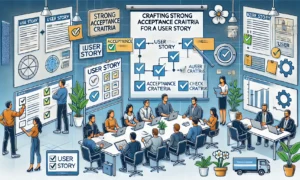Introduction
In the dynamic world of product management, failure is inevitable. No matter how meticulous your planning or innovative your ideas, products can fail due to a variety of reasons: changing market conditions, user feedback, technical limitations, or simply not meeting the target audience’s expectations. For product managers, failure can feel like a major setback, but it’s crucial to understand that failure is not the end—it is an opportunity for growth, learning, and pivoting toward greater success. The key is to respond to product failure with resilience, an open mind, and a structured approach that turns setbacks into stepping stones.
In this article, we will explore how product teams can handle failures effectively, learn from them, pivot when necessary, and ultimately turn these challenges into future opportunities. Whether it’s launching a new feature that doesn’t resonate with users or a product that fails to meet its market potential, knowing how to navigate and learn from these experiences can lead to stronger, more successful products in the long run.
Understanding the Causes of Product Failure
Before diving into the strategies for handling product failure, it’s essential to understand why products fail. Analyzing the root causes can provide insights into how to prevent future missteps and help teams learn and grow.
- Lack of Market Fit
One of the most common reasons products fail is that they don’t meet the real needs of the market. Many times, companies develop products based on what they think users want, rather than based on validated user needs or insights. When there’s a disconnect between the product and its market, the product will struggle to gain traction, leading to failure. - Poor Timing
Timing plays a critical role in the success of a product. A product might be too early for the market, or it might arrive too late, with competitors having already established dominance. Even groundbreaking products can fail if introduced at the wrong time. For example, introducing a new app for a market that’s not yet ready for it or launching a product when economic conditions make consumers less likely to purchase can result in failure. - Technical Issues or Bugs
For tech-based products, technical failures are a significant contributor to product failure. Bugs, glitches, or an inability to scale can lead to frustration among users. If the product doesn’t function as promised or causes issues, it quickly loses trust, and customer loyalty diminishes. This can result in a failed product launch and damaged reputation. - Inadequate Marketing or Awareness
A product can fail simply because it wasn’t marketed effectively or the target audience wasn’t aware of it. Even the best products need strong marketing strategies to build awareness, convey their value proposition, and engage users. Without proper promotion or communication, potential users may never even learn about the product, leading to poor sales and failure. - Price Point and Value Perception
Pricing is a critical factor in product success. If a product is priced too high, it may not be accessible to a wide enough audience. Conversely, if it’s priced too low, it can create an impression of poor quality or unsustainable business practices. Getting the price point wrong can directly lead to product failure, especially if the perceived value doesn’t match the price. - User Experience (UX) Issues
Products with poor usability or a confusing interface are unlikely to succeed, even if they fulfill a real need. User experience is an essential part of product development, and if users encounter difficulties or frustration, they will abandon the product. Poor design, confusing navigation, or lack of intuitive features can significantly harm a product’s chances of success.
How to Turn Product Failures into Opportunities
Rather than seeing product failure as a lost cause, the most successful product managers view it as an opportunity to pivot, learn, and improve. The key is to adopt a mindset that treats failure as feedback and an essential step toward success.
Here are actionable strategies for handling product failures and turning them into opportunities:
1. Acknowledge and Accept the Failure
The first step in handling product failure is to acknowledge it. Denial or blame-shifting can delay learning and prevent teams from moving forward. Recognize that failure is an inherent part of the product development lifecycle. In fact, failure can be a powerful tool for improvement, provided that it’s treated with the right mindset.
Acknowledging failure also involves accepting that not every product will succeed, and that’s okay. No company or product manager has a perfect track record, and the best teams are those that adapt and learn from their failures. By acknowledging the failure, you open up the possibility for reflection and critical analysis of what went wrong and how it can be corrected.
2. Analyze the Failure in Detail
Once a failure has been acknowledged, the next step is to conduct a thorough analysis. Understanding why the product failed is essential to avoid repeating the same mistakes in the future. Start by gathering data—this could include customer feedback, sales numbers, product usage analytics, and internal reports.
- Customer Feedback: Did users find the product difficult to use? Did it fail to solve their problem? Did the marketing message resonate with the target audience? Collecting qualitative feedback through surveys, interviews, and social media analysis can provide valuable insights into where the product went wrong.
- Sales and Usage Data: Reviewing sales data and user engagement metrics can offer clues. If the product was released but didn’t gain traction, the issue might be related to market fit, user experience, or pricing. On the other hand, if users abandoned the product after the first use, there may be issues with functionality or user satisfaction.
- Internal Team Feedback: Gather feedback from your internal team as well. What challenges did they face during development? Were there technical hurdles or resource constraints that prevented the product from meeting expectations?
By examining these different perspectives, you can build a comprehensive picture of what led to the product’s failure and identify areas for improvement.
3. Learn from Mistakes and Document Key Insights
Once you’ve analyzed the causes of failure, it’s time to learn from those mistakes. Document the insights gained from the analysis and make a plan for how to prevent similar issues in the future. This may involve:
- Refining Product Development Processes: If miscommunication or unclear goals contributed to the failure, consider streamlining your product development process. Establish clearer roles, timelines, and decision-making procedures to ensure better alignment.
- Improving Market Research: If the failure stemmed from a lack of market fit, invest more time in user research and validation in future projects. Use methods like user personas, surveys, and beta testing to validate the product idea before launching.
- Adopting New Methodologies: If the failure exposed flaws in the product design or execution, adopt new methodologies to improve the outcome. For example, implementing agile development or lean startup principles can help you iterate faster and pivot more efficiently in response to market feedback.
4. Pivot or Iterate Based on Insights
Once you’ve learned from the failure, the next step is to decide whether to pivot or iterate on the existing product.
- Pivoting: If the product’s core concept is flawed or there is a significant disconnect between the product and the market, it may be time to pivot. This means making a fundamental change in direction, such as altering the product’s features, target market, or business model. For instance, a company may start by developing a B2C product, only to realize that the solution is more effective for B2B customers, requiring a shift in target audience.
- Iterating: If the product has potential but needs refinement, then iteration may be the right approach. This could involve tweaking the design, adjusting features, or improving usability based on the feedback you’ve gathered. Iteration is often more cost-effective than a complete pivot and allows the product to evolve in response to market demand.
In either case, the goal is to make changes that will improve the product’s chances of success in the future, based on the insights you’ve gathered from the failure.
5. Communicate the Learnings to Your Team and Stakeholders
Transparent communication with your team and stakeholders is critical during the failure recovery process. Keep everyone informed about what went wrong, what you’ve learned, and what steps will be taken next. This not only helps build trust but also aligns everyone around the same goals moving forward.
- Internal Communication: Within your team, share the findings of the failure analysis and discuss how these insights will inform future decisions. This can be a valuable learning experience that improves the performance of the entire team in subsequent projects.
- External Communication: If the product failure has public consequences, such as damaged customer trust or poor reviews, be proactive in communicating what went wrong and what you’re doing to fix it. Honesty and transparency can help mitigate backlash and maintain your company’s reputation.
6. Embrace a Growth Mindset and Keep Innovating
The most successful companies are those that continuously innovate and learn from failure. Adopting a growth mindset is essential for any product manager. Instead of viewing failure as a permanent setback, see it as an opportunity to evolve and improve.
Incorporating a culture of experimentation, learning, and adaptability will make your team more resilient and better equipped to handle future challenges. Each failure provides a valuable lesson that can lead to better products, more effective processes, and greater business success.
Conclusion
Failure is an inevitable part of product development, but it doesn’t have to be the end of the road. By acknowledging the failure, analyzing its causes, learning from mistakes, and iterating or pivoting based on those insights, product teams can turn setbacks into valuable opportunities for growth. The key is to view failure not as a reflection of your capabilities but as a necessary step in the journey toward success. With resilience, reflection, and a commitment to continuous improvement, every failure can become a stepping stone toward a better, more successful product.
Disclaimer
Posts in the Notebook are written by individual members and reflect personal insights or opinions. Please verify any information independently. If you have any concerns, notify the admin immediately so we can take action before any legal steps are taken.





